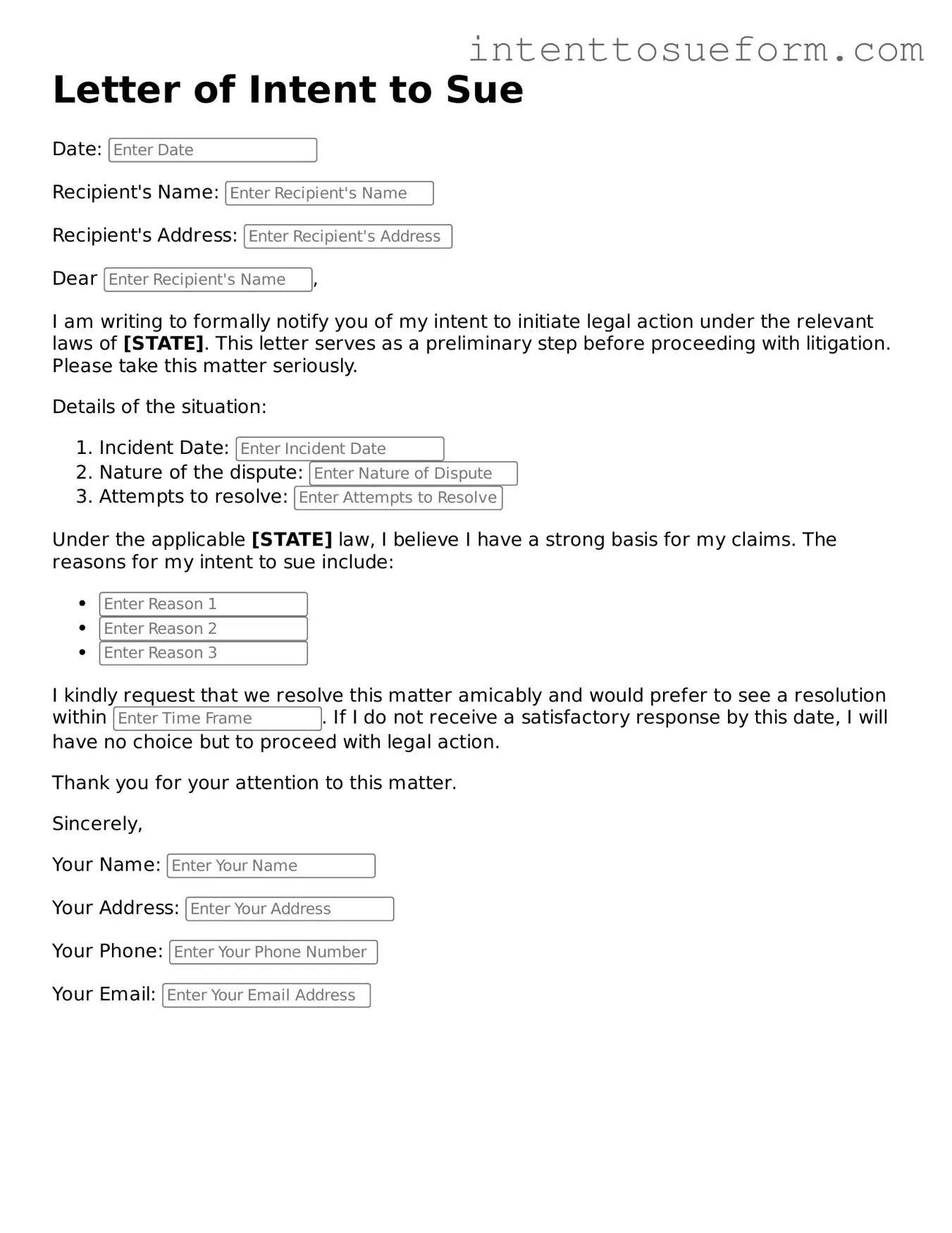Common mistakes
-
Incomplete Information: Many individuals fail to provide all necessary details, such as their contact information or the specific nature of the dispute. This omission can lead to delays or even dismissal of the case.
-
Incorrect Formatting: Some people overlook the required format for the form. Not adhering to specified guidelines can result in the form being rejected or returned for corrections.
-
Lack of Supporting Documentation: Submitting the form without accompanying evidence or documentation weakens the claim. Relevant documents can substantiate the allegations and strengthen the case.
-
Failure to Sign: A common oversight is neglecting to sign the form. Without a signature, the form is not considered valid, which can halt the legal process.
-
Ignoring Deadlines: Many individuals miss critical deadlines for submitting the Letter of Intent to Sue. Timeliness is crucial; delays can jeopardize the opportunity to pursue legal action.
